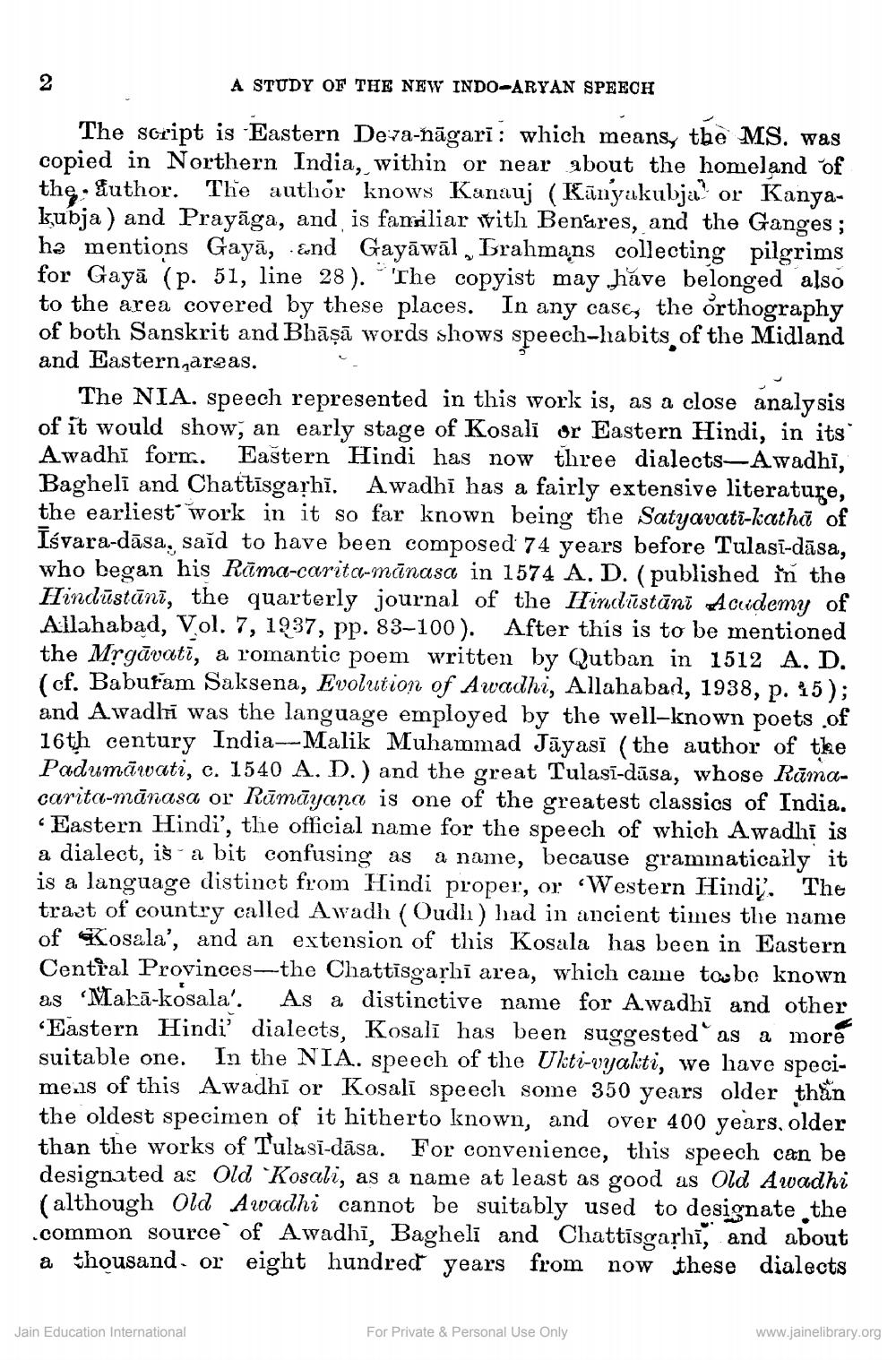________________
A STUDY OF THE NEW INDO-ARYAN SPEECH
The script is Eastern Deta-nāgari: which means, the MS. was copied in Northern India, within or near about the homeland of the . &uthor. The author knows Kanauj (Kūnyakubja" or Kanyakubja) and Prayāga, and is familiar with Benares, and the Ganges; he mentions Gayā, End Gayāwāl brahmans collecting pilgrims for Gayā (p. 51, line 28). "'The copyist may have belonged also to the area covered by these places. In any case, the orthography of both Sanskrit and Bhāṣā words shows speech-habits of the Midland and Eastern areas. .
The NIA. speech represented in this work is, as a close analysis of it would show, an early stage of Kosali or Eastern Hindi, in its Awadhi forn. Eastern Hindi has now three dialects-Awadhi, Bagheli and Chattisgarhī. Awadhi has a fairly extensive literature, the earliest work in it so far known being the Satyavati-katha of īśvara-dāsa, said to have been composed 74 years before Tulasī-dāsa, who began his Rāma-caritamanasa in 1574 A. D. (published in the Hindūstānī, the quarterly journal of the Hindustāni Acudemy of Allahabad, Vol. 7, 1937, pp. 83–100). After this is to be mentioned the Mrgāvati, a romantic poem written by Qutban in 1512 A. D. (cf. Baburam Saksena, Evolution of Awadhi, Allahabad, 1938, p. 15); and Awadhi was the language employed by the well-known poets of 16th century India--Malik Muhammad Jāyasī (the author of the Padumāwati, c. 1540 A. D.) and the great Tulasī-dāsa, whose Rāma. carita-mānasa or Rāmāyaṇa is one of the greatest classics of India. · Eastern Hindi', the official name for the speech of which Awadhi is a dialect, is a bit confusing as a name, because grammaticaily it is a language distinct from Hindi proper, or Western Hindi. The tract of country called Awadh (Oudlı) had in ancient times the name of Kosala', and an extension of this Kosala has been in Eastern Central Provinces—the Chattisgarhi area, which came toebe known as Malā-kosala'. As a distinctive name for Awadhi and other
Eastern Hindi' dialects, Kosali has been suggested as a more suitable one. In the NIA. speech of the Ukti-vyakti, we have specimeus of this Awadhi or Kosali speech some 350 years older than the oldest specimen of it hitherto known, and over 400 years, older than the works of Tulasi-dāsa. For convenience, this speech can be designated as Old Kosali, as a name at least as good as Old Awadhi (although Old Awadhi cannot be suitably used to designate the .common source of Awadhī, Bagheli and Chattisgarhī, and about a thousand. or eight hundred years from now these dialects
Jain Education International
For Private & Personal Use Only
www.jainelibrary.org




